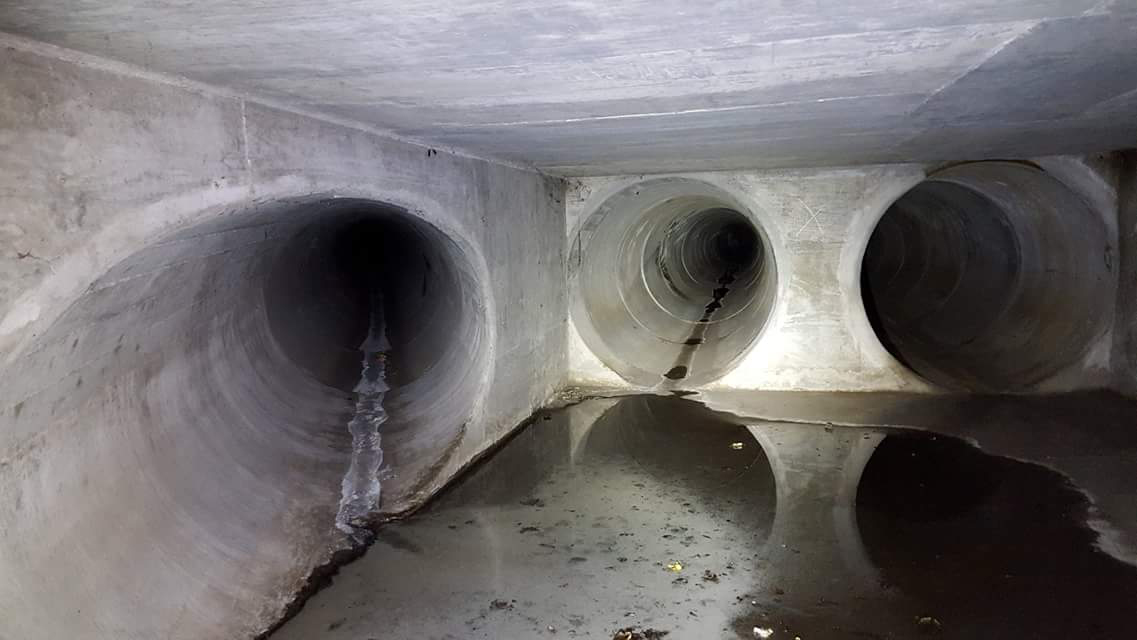Urban Caving
Stay Wild
Exploring Underground Drains and Abandoned Mines
Story by Trevor Mottram
Photo by Trevor Mottram
When I moved to San Diego in 2012, I founded Southern California Exploration & Adventure (SoCalX) as a means of meeting people who wanted to explore places that were a little more interesting than the walking and bike paths at the local park. I was getting into exploring with my neighbor at the time, using websites to find places around San Diego to visit. After my first walk-in mine tunnel, I was hooked on the underground. It was a relatively small mine, about 200 feet deep, and contained old timbering and fallen air ducts, as well as the first mining relic I ever came across: a 1950s Montgomery Ward tool box, sitting on a wooden shelf. Three years later, we’re rappelling into vertical mine shafts, going deeper underground than ever! While SoCalX hosts a variety of events, from snorkeling to peak bagging, our main interests lie underground.
Drain Photos by Bernie Freidin
Some of our members are extremely into storm drains. One member has mapped hundreds of miles of tunnels all over San Diego and Los Angeles, and has done everything from crawling on hand and knee through 24-inch diameter pipes to passing through 15 foot-high underground flood channels! He uses proper surveying gear and overlays his maps onto Google Earth—mainly for his own personal gratification, but he loves to share his photography and stories. Draining is a relatively safe hobby, but there are things to watch out for, namely animals, bums, punk kids, and all manner of random shit that’s found its way underground. Of course there’s the very remote possibility of a flash flood.
There is also an infinite amount of graffiti, some of which is absolutely stunning while some looks like a chimp did it. Art is in the eye of the beholder, but crap art is crap art. While I don’t condone vandalism and tagging shit above ground, storm drains and tunnels are a perfect canvas, below the prying eye of society. Take note, kids: Go under the street, where people who actually want to see it can. Don’t doodle on buildings, especially if you’re one of these guys who wants to paint a wizard riding a unicorn, but only manages a stick figure holding what is supposed to be a gun, with “fuck you” scrawled above it.
While draining is pretty safe and has its own virtues, on the other end of the spectrum are abandoned mines. The very real fact is that old mines can be deadly. We often rappel down vertical shafts in the desert, where the ground at the bottom is littered with the skeletons and remains of rabbits, lizards, and rats. Haven’t found a dead guy yet, but it’s only a matter of time. Even worse than the possibility of falling to your death is blowing yourself up by stepping on a stick of dynamite or blasting cap. We explored a mine recently where we found a pile of 60 sticks! The older nitroglycerin gets, the more unstable it can become, even reacting to mere touch. Climbing over piles of rubble is a sketchy undertaking if you think you could be stepping on explosives. Scary stuff. Finding items left behind by miners decades ago is really fun, and the only time trash is remotely interesting.
Photo by Trevor Mottram
Now your interest is piqued and you’re thinking about getting underground, right? Start small with easy stuff and grow from there. Go find a storm drain and explore it. But don’t go straight to rappelling into mines if you know nothing about what you’re getting into. I suggest learning about mining history and techniques, and how the workings were dug.



